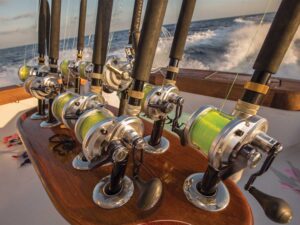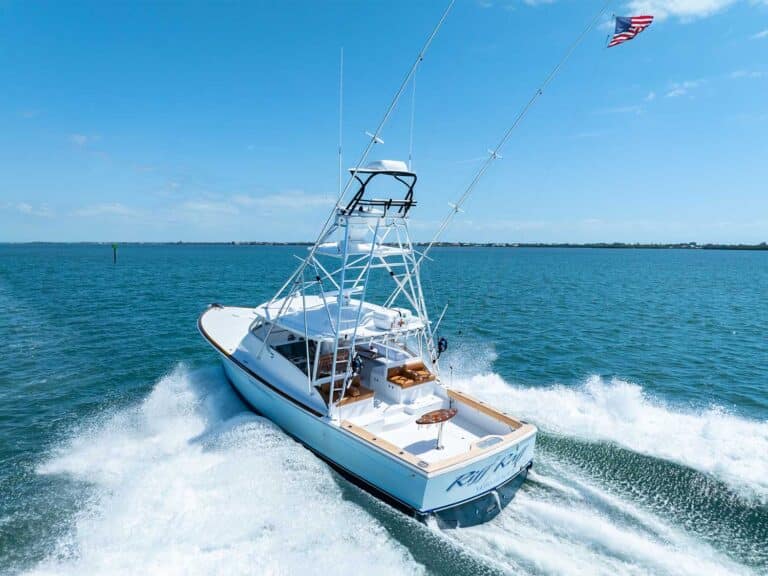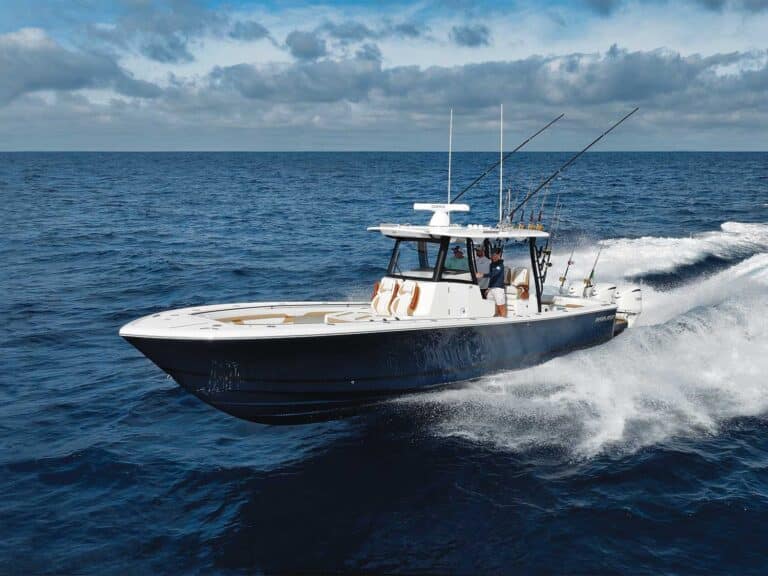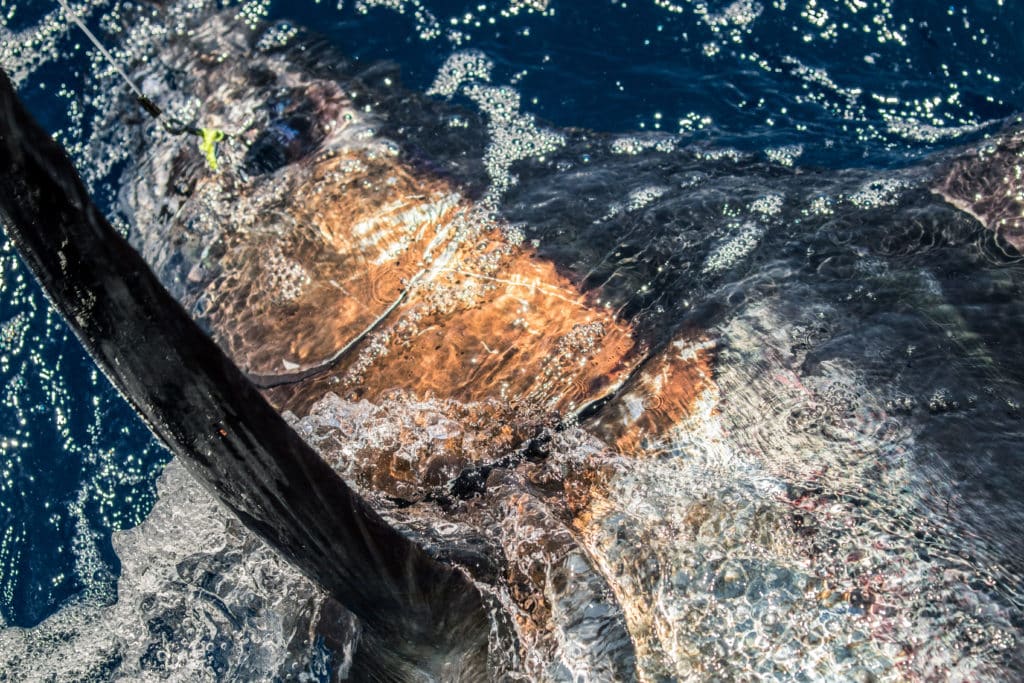
After selling my fly shop in the Florida Keys and retiring from my position as CEO of STH Reels in 1991, I decided that I would run fly-fishing schools for billfish (I ran bonefish schools in the Bahamas for over 30 years). In 1992, I started my Sailfish School with destinations in Central America, relocating to Guatemala the following year. Later, I developed the Billfish Schools, which operated in the Galapagos Islands, Mexico, Panama, the Dominican Republic, Australia, and finally in Costa Rica. There, I’ve operated my Blue Marlin Fly Fishing School since 2013.
The technique I use for blue marlin — the one I teach my students — is the result of many factors. Along with constant tackle upgrades, it is the result of input from many great captains and mates, from my own success, from watching many thousands of billfish caught on fly, and coaching countless angler/students to success. First, I believe that catching blue marlin on fly is a team sport, with responsibilities divided equally between the tackle, the captain, the mates, and the angler. No blue marlin will be caught on fly if one of these elements fails.
Tackle Tips
I recommend the TFO Blue Water HD fly rod and the Mako 9700-B fly reel, filled with 500 to 700 yards of 65-pound-test GSP backing looped to an 80-foot-long section of 50-pound-test Sufix Superior running line with 80-pound-test Dacron loops on each end. The forward running line loop interlocks with a loop on the rear of a RIO Leviathan 30-foot fly line. A nine-foot, 60-pound-test mono leader butt section is looped to the front end of the fly line. The butt section has a four-inch loop on the fly end to change the class and bite tippet and the marlin tube fly. I use 20-pound-test Mason Hard monofilament, with less than 16 inches between the knots. The class section is connected using a Huffnagle knot to the 11-inch, 100-pound-test mono bite tippet. I prefer using tube flies with a quarter-inch diameter tube tied with feathers, like the Cam Sigler Big Marlin fly.
The Setup
A right-handed angler strips out 25 feet of fly line and leader, placing everything ready to cast in the aft port corner of the vessel (looking aft, this is the right side of the cockpit). The drag is set at exactly one pound or lighter. I place setting marks on my Mako reels at one pound, three pounds, and six pounds of pressure, the large drag knob requires only a slight movement between settings.
We usually troll one teaser for each mate — one flat line and one rigger line — and one teaser for the captain from the bridge. As a blue marlin comes up behind a teaser, the other two teasers are removed from the water as quickly as possible while the angler places the fly in the water. The teaser being chased by the marlin is wound in as quickly as possible until the fish is 50 feet from the transom.
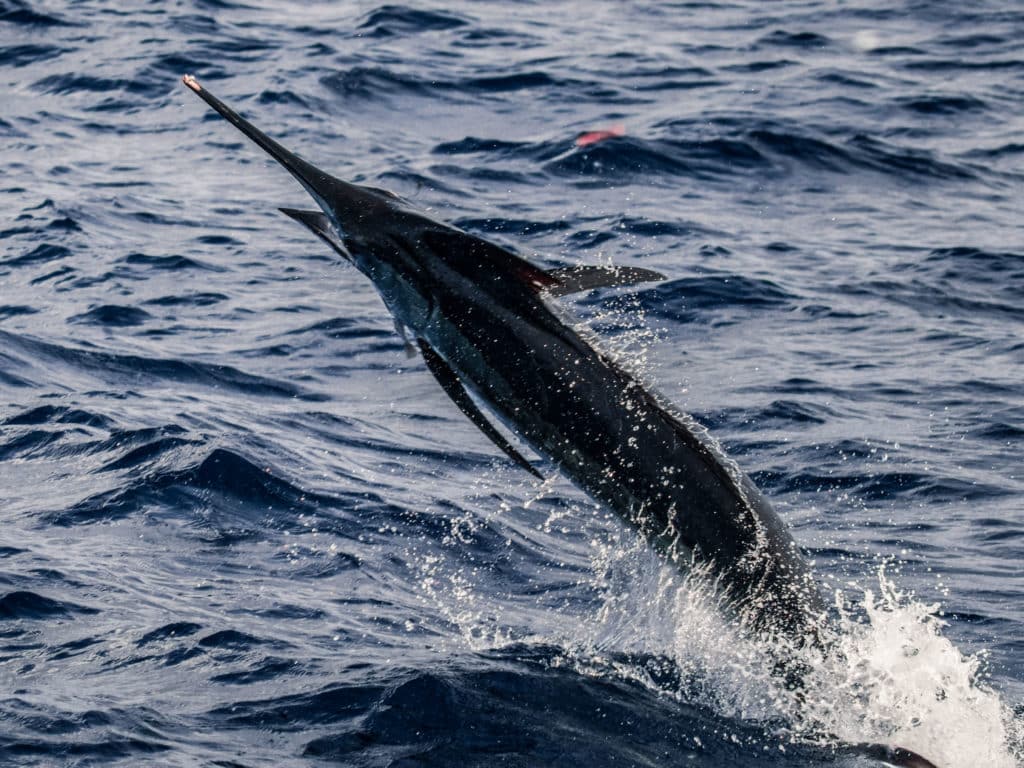
At this exact moment, the captain makes a slight turn to put the teasers into clear water then pulls the vessel out of gear and yells, “Cast!” The angler water-loads the fly and makes a 25-foot cast across the wake to the spot where the teaser had been, placing the fly on the surface like wounded bait. The angler may need to pop the fly once or twice to get the fish’s attention but usually, the blue marlin will attack by coming out of the water and eating the fly at high speed from the side. These fish are going so fast that if you have more than one pound of drag pressure on the bite, the 20-pound-test class tippet will break. As the marlin streaks away, the angler points the fly rod at the fish so the rod is not bent at all, as the line peels from the spool. By now, the captain is backing down as fast as possible, while the marlin continues taking line from the reel. Most times as the fish charges away, it begins to make a series of jumps. The angler must keep the rod pointed at the fish and the tip always lower than the boat guwales.
The secret here is that when that fish runs and jumps with so little pressure from the light drag setting, the 550-grain fly line sinks and is dragged by the fish under its belly, while the mono running line stretches like a rubber band (80 feet of 50-pound-test running line can stretch 20 feet before the 20-pound-class tippet breaks). The marlin feels the sinking fly line pulling downward, which keeps the fish running and jumping on the surface. The boat chases the fish; the angler puts the rod tip under water at a 45-degree angle from the aft port corner of the vessel, and winds as fast as possible, placing the slack line back on the reel.
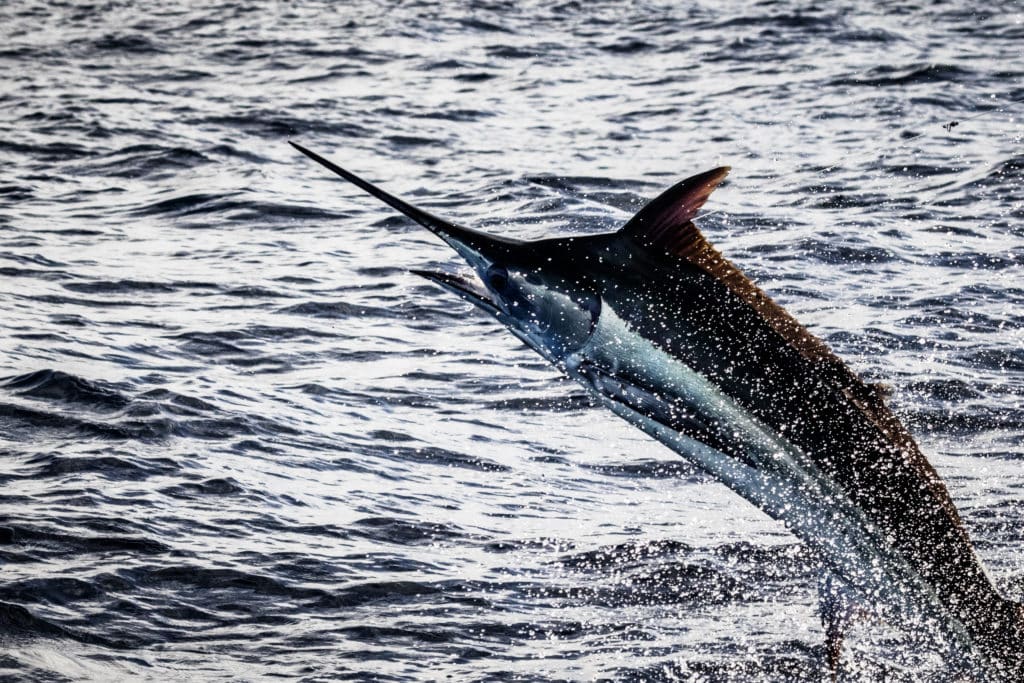
Each time the marlin takes off again, the angler points the rod at the fish and relaxes until it slows. Finally, when the angler sees the running line enter the reel, he reaches down and changes the drag setting to exactly three pounds of pressure. Still, the angler must focus to relax and not bend the rod, putting line on the reel as the fish is chased. When the fly line comes into the tip top, the angler adjusts the drag pressure to six pounds of pressure. Though the fish is tired, the angler should not be as he has not been pulling hard and burning energy by bending the fly rod. But with the increased drag pressure, extra care is needed. Getting the last 30 feet of line is tricky! The angler should apply a steady rocking pressure of six pounds, without bending the rod, until the leader is wound into the tip-top of the rod. Once the technical release is made, with the leader inside the rod tip, I like to move the drag up to ten pounds of pressure. Usually, this rolls the marlin on its side and we can grab the bill and remove the fly from the fish’s mouth. If the 20-pound tippet breaks, the large diameter tube allows the fly to float to the surface, and with no pressure, the hook will fall out as the marlin swims away, or will rust out in a short period of time.
The Statistics
Until 2013, we used to catch one blue marlin from every 10 bites, and for many years we would not cast flies to marlin over 200 pounds. Since 2013, at my Costa Rica Blue Marlin Fly Fishing School, we have averaged catching better than 40 percent of the blue marlin that eat our flies. The rush of the strike and the ensuing battle is incredible.
